Pharm Exec's Emerging Pharma Leaders 2018
Pharmaceutical Executive
Pharm Exec’s 11th annual list of rising leaders highlights 10 pharma managers who are poised to help chart the industry’s path forward.
Pharm Exec’s 11th annual list spotlights a select group of biopharma managers who are poised to help chart the industry’s path forward. We present the diverse stories of 10 rising executives-and detail how each are changing the ways leaders direct critical industry functions such as R&D, data and analytics, patient advocacy, business, commercialization, and human resources
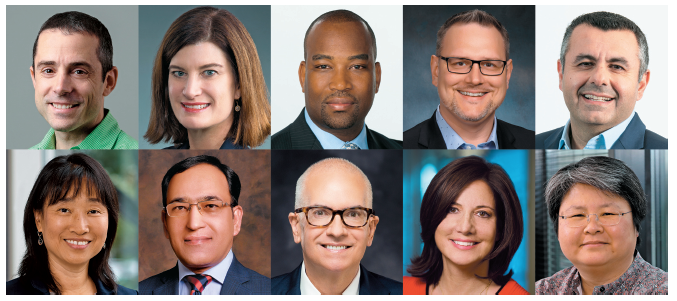
This year’s class of Emerging Pharma Leaders embody the many changes that pharma has made to navigate the many complexities in the industry. Newly-created titles that oversee functions that have only come into higher priority in the past five years; executives that have traversed non-pharmaceutical paths to bring different perspectives to their current position; and those that realize the most successful executives are the ones that recognize talent and bring their successes forward.
This year, Pharm Exec received over 100 nominations, and the final 10 selections were judged in a blinded process by three members of Pharm Exec’s Editorial Advisory Board, and a former Emerging Pharma

Leader representative. Judging criteria was based on the nominee’s current role; progression of their career; education and extracurricular activities to enhance leadership; and specific case examples. The final 10 are those individuals that have exhibited the qualities, knowledge, and skills that show they have what it takes to make the tough decisions that will continue to face manufacturers in the coming years.
In many of the profiles you will read in the pages ahead, and many that you have read in the past, you can’t help but notice some similarities. These individuals share a passion for their profession and they are vested in directly touching patients’ lives. In no other industry do we see this level of commitment, personal reward, and true belief in the difference science and medicine make to the world.
Congratulations to this year’s Emerging Pharma Leader alumni and thank you for sharing your inspiring stories.
- Lisa Henderson, Editor-in-Chief
The Talented 10; click to enlarge

A ‘Data Hippie’ at Heart
Christopher Boone, VP, Head of Real-World Data & Analytics, Pfizer
When Christopher Boone’s children ask him for career (or life) advice, he simply tells them to “always follow your passion,” and though he says they leave the conversation perplexed, due to its lack of clear direction, he feels strongly that it’s advice that has served him well.
By following his passion, Boone now serves as VP and head of the Global Real-World Evidence Center of Excellence at Pfizer. It’s a position that fittingly pulls together all of his previous experiences, and maybe most interestingly, it is a job that didn’t exist five years ago-a testament to the changing landscape of the pharmaceutical industry.
“Candidly, there is no structured academic or professional training to prepare for this job,” says Boone, who
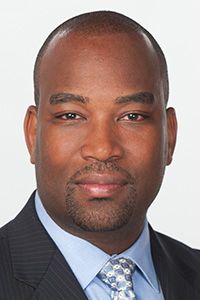
holds a PhD in public affairs from The University of Texas at Dallas; a masters in healthcare administration from The University of Texas at Arlington, a bachelor’s degree in business administration; management information systems from The University of Tulsa; and several executive certificates from Harvard University’s John F. Kennedy School of Government. “One cannot create a standard candidate profile [for this position]. Unfortunately, it’s not like I could identify an existing leader who has mastered this job and suggest, ‘Hey, teach me what you’ve learned in today’s environment so that I may be successful in this role.’”
One characteristic that has made Boone successful is his insatiable desire to learn and attempt new endeavors. It’s how he landed as the CEO of the Health Data Consortium, a public-private partnership working with the White House and the US Department of Health and Human Services focused on advancing open health data in the US under the Obama administration.
It’s also how Boone would join Avalere Health as a VP spearheading real-world informatics and digital strategies. And, before that, in various health informatics and patient advocate roles at the American Heart Association, Cook Children’s Health Care System, and other Texas-based integrated health systems.
While he was always interested in data and technology, Boone didn’t have a true passion for the general application to purposes that did not improve human life. One of his personal drivers for pursuing transformation within healthcare using data and technology was a life-threatening, health-related incident that happened with his mother. Boone says it could have gone much smoother for everyone involved, from the doctors and hospital administrators to his mom and family, if the appropriate health data-sharing technologies were in place.
“At the time, I was relatively early in my career and convinced that my destiny was to be a CEO of a hospital system,” he says. “And I was putting all the pieces in place to achieve that vision, such as working on my masters in healthcare administration and being active in many civic organizations. However, it was that moment that I realized that I could do something greater by enabling the healthcare world with informatics and data. I felt like it was my calling and knew we really needed to do something to transform the industry.”
In each position Boone has held, it has opened his eyes to another perspective or tool that he should pursue to make him more effective. “Honestly, I would love to tell you that I had this master plan for how all of my passions and interests would converge, but I’d be lying-I only wish I had that foresight,” he says. “The only objective I had was to continuously press forward with pursuing my passion, my calling if you will.”
Boone knows that to be successful, you do not always need to be the smartest, but you do need to build a team of very smart and talented people and provide them with the tools to succeed in their respective fields.
“The key to any great leader is to know thyself, which means recognizing and embracing your own strengths and weaknesses,” he says. “I know that if I have a great team with the appropriate mixture of talents and skill sets, then we can do great things.”
Boone credits this perspective to his time playing football growing up, where you are taught to go out on the field with 10 teammates, each with a specific role, responsibility, and skill and to perform collectively to the best of their abilities. Boone also credits his humble beginnings.
“I grew up in a relatively poor community in southwest Dallas called Oak Cliff,” he says. “When you have that type of life experience, it tends to manifest itself into a certain level of humility when you are leading people, but it also allows you to better connect with people from all walks of life because you see something in everyone. Clearly, I don’t come from a privileged background, so I don’t see myself as any better than the next person; but I do have the utmost gratitude for the extraordinary opportunities I’ve been blessed to experience, and seek to enable others to accomplish the same.”
Boone’s passion for health data doesn’t stop at the office. He is a featured speaker on the topic at a number of different venues and conferences; has an active Twitter account-@DataHippie-where he shares his knowledge; serves on a number of nonprofit boards supporting the cause; and acts as an adjunct professor of health informatics at the University of Cincinnati. Teaching the next generation of leaders might be one of Boone’s most challenges jobs, given the fast-changing industry. But the fact that he is in a position that was created less than a decade ago, it also makes him the most qualified.
“There is definitely a tendency for students to want to jump right into the highly technical aspects of the course,” says Boone. “But the reality is, the digital world is evolving rapidly and getting more and more automated, which means by the time they are out of school, their core technical skills may be obsolete. I try to concentrate on enhancing their critical-thinking and building the necessary soft and technical skills that could be transferrable, such as leading project teams, communicating with non-technical audiences, and actually solving real-world problems using data.”
- Michelle Maskaly
From Bench to Business
Hong Cheng, Head of Research Strategy & Effectiveness, Sanofi
Imagine being in your early 20s, enrolling at a university in another country where you didn’t know the language and moving there alone. Pretty scary, right?
That’s exactly what Hong Cheng did, which eventually led to her current position as the head of research strategy and effectiveness at Sanofi Research and Development in Massachusetts. Surrounded by a family of artists while growing up in China, Cheng’s dad didn’t want her to go into the art industry. Instead, as she tells it, “he wanted me to do something different.” Lucky for both of them, Cheng’s mother worked at a pharmaceutical company and after spending one day shadowing her there as a little kid, Cheng fell in love with science-and the white lab coat, a traditional symbol of a bench scientist.
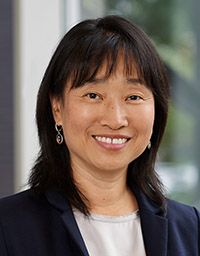
Cheng holds a PhD in biochemistry/organic chemistry from the University of Maryland, and conducted her postdoctoral research at Harvard University Medical School. While she says being in a research lab was important to help craft her skills and education, her passion was more about helping people. Cheng wanted a career where she could make, and see, a direct impact.
That’s when she entered industry, starting at a small biotech as a scientist. As Cheng moved to larger companies, she also took on more responsibility, including project leadership, and teams-building and management. Meanwhile, she quickly realized that in addition to the science behind the drugs, she wanted to learn the business side of industry.
To achieve this, Cheng attended the MIT Sloan School of Management, earning her executive MBA in 2015. Cheng credits this experience as being one of the best educational lessons of her life, and something she encourages others to pursue. “They said, ‘a scientist’s view is very narrow. We see the science, but we don’t see the broader view of the industry,’” recalls Cheng of the time before she started the program. “During orientation, they said, ‘this program is going to transform you.’ I didn’t believe it.”
But Cheng admits the instructors did deliver on their promise, noting that because it wasn’t a healthcare-specific MBA program, there were people across all industries in the classes, allowing for more diversified learning. “During the program, I began to realize that one really had to think not just about the science, but how to integrate scientific discovery with the demand of the industry growth.”
This is why when Cheng mentors younger scientists, she encourages them to understand the business perspective. “It makes you become a better leader, communicator, and drug developer,” says Cheng. “Most people who come talk to me about their career, my advice is that first you need to work diligently to really understand the science and how drug discovery works. Then go and learn the business thinking to help you be able to articulate strategy, drive for efficiency, and be more effective. The majority of the time I see a scientist do a lot of great science, but they don’t know how to communicate effectively to make upper management understand the business impact of what they are doing.”
Cheng’s passion for building the next generation of scientists and drug discovery strategists stretches across the world. In fact, she played an important role in building Sanofi’s global research organization, establishing the Global Research Leadership Team, and formulating the company’s research strategy. She worked closely with the oncology leadership group in rebuilding Sanofi’s preclinical pipeline in cancer. Cheng also played a key role in strategic planning for Sanofi’s research presence in China.
When she’s not speaking at a global conference or discovering new drugs, Cheng lends her skills to helping biotech startups with guidance on raising funds, marketing, and articulating their strategy. Cheng is particularly focused on supporting companies run by female CEOs, and serves on a panel of mentors for Springboard, a non-profit organization whose mission is to help women CEOs be successful.
It can get a little clichéd, but people often say “follow your passion,” and that’s exactly what Cheng has done when it comes to shaping her career path. “I never imagined I would go to business school,” she says. “I was a hardcore scientist. I never had a goal of becoming a CEO or CFO.” But Cheng’s passion to go outside the box and make a bigger impact led her down a path she never dreamed of. “I have to be passionate and believe in it, if I am going to do something.”
- Michelle Maskaly
A Mission to Innovate
Kathryn Corzo, VP, R&D Global Project Head, Isatuximab, Sanofi
It would be easy to attribute Kathryn Corzo’s career path in the biopharma industry to two distinct influencing forces-and leave it at that.
One was her father, an engineer, who taught Corzo from a young age that there was always a way to solve and fix a problem no matter how complex, which instilled in her a love of science and technology. The other was when a close relative was diagnosed with cancer at a young age. Corzo was already studying pharmacology at Massachusetts College of Pharmacy and Health Sciences, where she would earn a pharmacy degree, and had started working at the Dana-Farber Cancer Institute in the experimental therapies
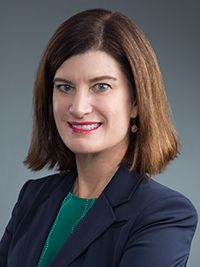
unit, but the experience of watching a loved one undergo “extremely difficult” treatment ingrained in her a personal mission and focus that continues today: steer efforts in drug development to bring novel and urgently needed therapies to patients with cancer.
Both of those examples serve as logical stage-setters for a career in pharma and medicine, but as Corzo’s journey shows, when peeled back to reveal the diverse trajectories and connections along the way, there is usually much more to the story. Those early, defining influences and events all circle back and contribute to what Corzo says is a deeply-rooted purpose to grow and accelerate innovation from the ground up.
“I love startup opportunities, even in large companies,” says Corzo, who today works for Sanofi as VP and R&D global project head for isatuximab, the company’s late-stage investigational drug for multiple myeloma-a new indication to Sanofi-and lead cancer candidate in its oncology-hematology pipeline.
Corzo originally joined Sanofi in 2010 as associate VP of global development operations and strategic planning, attracted by the opportunity to get in the door as the Paris-based drugmaker was reinventing its global oncology business, establishing headquarters for a new cancer unit in Cambridge, Mass. Earlier in her career, Corzo was integral to two other starting-point endeavors in big pharma. The first was at Roche in Basel, Switzerland, where she was a market manager for a number of countries and then assumed a business development role during the beginnings of Roche Molecular Systems. Corzo was part of the startup team and contributed to the development and launch of Roche’s genome sequencing tool, the precursor to today’s standard next-generation sequencing technologies. She also managed a portfolio of drugs that included the cancer therapy Neupogen.
Later, Corzo returned to the US to become a key part of Lilly’s inaugural entry into oncology. Working in what she called a “startup environment,” Corzo played a significant role in the development and commercialization of blockbuster cancer drugs Gemzar and Alimta across several indications, helping to build Lilly’s oncology business in various assignments-from clinical research to medical affairs to sales leadership-over nearly 12 years at the company.
In between Lilly and Sanofi, Corzo even got a taste of the more traditional startup world, serving a stint as senior director, clinical liaison and medical communication, for epigenetics-focused startup Syndax Pharmaceuticals.
“I’m not a person who has stuck with a single line of growing my career in a particular function or a particular expertise,” says Corzo, a native of Massachusetts, who grew up in the town of Andover. “What I’m able to bring my team is an agnostic view in the sense that all expertise and perspectives mean something to me. …When you just work in R&D, you’re a bit isolated from what happens commercially-particularly from a market-access perspective.”
This appreciation of the value chain has guided Corzo at each of her big pharma stops, where she has built multifunctional expert teams in several areas. For example, in her global program head role at Sanofi, she has merged strategies across preclinical, biomarkers, clinical development, biostatistics, regulatory affairs, biologics CMC (chemistry, manufacturing, and controls), commercial, market access, medical affairs, and other functions such as digital.
Over the course of her career, Corzo’s ability to manage complex programs in varied and dispersed markets was vital in the development and launch of four major cancer therapy brands. She hopes isatuximab will be the fifth. Corzo has shepherded the advancement of isatuximab, a monoclonal antibody, from pre-proof of concept to a clinical program that now includes four pivotal Phase III trials, the first of which was completed recently evaluating the drug in combination with other cancer agents. Isatuximab has been given orphan-drug designation in the US and European Union for patients with relapsed/refractory multiple myeloma. A regulatory filing is possible in the next six months, according to Corzo.
“In a way, it’s like a mini-CEO role,” she says of the project head responsibility at Sanofi, where, in the case of isatuximab, Corzo directs program execution across more than 50 countries. “I feel very accountable for the significant investment that we’ve made in this asset, and also making sure as we develop the asset, that patients around the globe will have access to it.”
In positioning isatuximab as such, should it win approval, Corzo credits her team’s commitment-having overcome “major challenges” to get to this point-and what she calls Sanofi’s unique “project-centric culture.” She’s glad as well, she says, for the supportive vision of Sanofi’s new R&D head John Reed, who joined the company in July after five years at Roche. “Our team was one of the first [at Sanofi] to have a patient advocate participate on the project team to provide insights,” says Corzo. “And we brought our commercial and market-access colleagues in early on in the project, right after proof of concept, so that we could work those into the development strategy. I believe that good drug developers are not just those that have clinical insight.”
Corzo also stresses the importance of industry-academia collaboration. In the leaner stages of isatuximab testing, she helped establish an agreement with the University of California, San Francisco (UCSF), which performed preclinical, translational, and clinical work-generating insights that ultimately led to one of isatuximab’s Phase III studies. Corzo and her team have formed other research partnerships to assess combination therapies or biomarkers, including with the International Myeloma Foundation.
“The future is around collaboration,” says Corzo, also pointing to the need for greater relationships with regulators and health insurers. “Because patients are waiting. Patients are waiting for new therapies and new innovation.”
Internal initiatives within pharma can impact this effort as well. Corzo was recently selected as one of 40 executives across various disciplines and cultures in Sanofi to participate in the company’s new innovation group, called Ignite. The leaders are connected with the global innovation accelerator ecosystem inside and outside the organization. Corzo, who fondly remarks of “the number of mentors that have helped guide my career and were willing to take a bet on me,” now mentors female entrepreneurs through programs at MIT and the Springboard platform. And with her sights on opportunities to assume greater business responsibility in new drug development and boost her analytical skills, Corzo is currently enrolled in the Executive MBA program at MIT Sloan School of Management, with graduation next June.
It seems the married mother of one, a daughter starting college, is following her own advice to new professionals entering pharma, perhaps inspired to pursue a similar leadership track that she did.
“Be bold, take career risks, and don’t be afraid of diversification,” says Corzo, an avid marathon runner, who has participated in races on all seven continents. “It’s important for a leader to recognize progress, whether it’s success or failure. Because, either way, we are advancing scientific progress and we are one step closer to helping patients who need our commitment to developing new therapies.”
- Michael Christel
Paying it Forward
Greg Griesemer, SVP, HR and Communications, G&W Laboratories
"Are you good with people, have no marketable skills, and want to make a lot of money?”
Those were the exact words in a newspaper ad that Greg Griesemer answered after graduating college-Franklin & Marshall with a pre-law degree. Already accepted to law school, Griesemer made the choice to forgo that route and instead pursue the opening with a staffing recruitment agency, much to the delight of his parents.
“They were really psyched at that time, recalls Griesemer, 43, with a laugh. “After a private college education, deciding to go into a commission-based sales role-they didn’t see the return on investment.”
But little could anyone predict then, Griesemer’s early experience as a headhunter (he got the job) would be
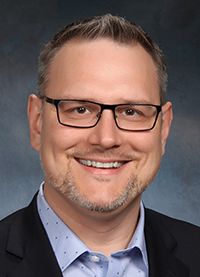
a springboard to an expansive and difference-making career in talent and HR leadership in the pharmaceutical and healthcare industries, with the Pennsylvania native looking back on those years as critical in shaping his professional identity.
“I answered that crazy ad, and when I sat down for the interview, the gentleman across from me said, ‘I’m not going to teach you how to recruit. I’m going to teach you long-term consultative selling, where the relationship is at the center of everything that you do,” says Griesemer. “That is a foundational item for me that still carries through to today.”
Griesemer is currently senior VP of HR and communications at G&W Laboratories, a company specializing in the development, manufacturing, and sales of generic pharmaceutical products, including topical creams, ointments, lotions, suppositories, oral liquids, and oral solids across a number of therapeutic areas. His pivot to pharma began in 2002, when Johnson & Johnson, then looking to beef up its staffing group supporting the New Jersey operations, hired him into their central talent identification team, liking Griesemer’s recent background at the time recruiting for engineering and operations positions in pharma and medical device. After almost seven years at J&J, including promotions into a variety of recruiting leadership roles and ultimately to director of the company’s global recruiting operations, Griesemer went on to Endo Pharmaceuticals as senior director of talent acquisition and HR operations.
He then segued to the broader healthcare world, joining insurance giant Cigna as talent director, and followed that with a stint in the diagnostics space with Ortho Clinical Diagnostics, before landing back in pharma. At each strategic stop, Griesemer says he’s held firm to the principle of “paying it forward”-not just for the next person that would step into his position, but in building strong and lasting networks and connections along the way.
“One lesson I learned from my father, is always leave things better than you found them, especially before you give it to someone,” says Griesemer, whose father was a factory worker for 35 years. “I remember when I was 10 or so, I saw him out back washing and detailing the car he just sold. That really stuck with me all these years. I’ve had the benefit of being able to experience different organizations, and I’d like to think that I’ve applied that value as I’ve moved from one to the other.”
Several company-scale examples offer proof. At J&J, Griesemer was part of the core team that led the evolution of its consolidated staffing arm from a 35-person team in 2002 focused on hiring for the NJ-based operating companies, to a centralized, global function of over 200 employees hiring across 18 countries by the time he left in 2009. At Endo, he was a key HR contributor during a fundamental shift in the company’s business strategy, which was moving from pure-play pain management to a holistic pelvic healthcare focus. Griesemer joined Ortho Clinical Diagnostics shortly after The Carlyle Group acquired it from J&J in 2014, directing the staffing of critical functions needed for the business to operate as a stand-alone entity. He developed hiring, talent management, and diversity and inclusion strategies-helping shape the company for a future sale or IPO.
Griesemer joined G&W Labs in August 2016 and quickly rebuilt the company’s HR function-from people and policy to process and systems-over the course of nine months. The HR infrastructure at the time was admittedly broken, having never been harmonized as G&W diversified its portfolio with acquisitions from Teva and Actavis in the prior years.
“We got lean very quickly in HR,” says Griesemer, who works out of G&W’s headquarters in South Plainfield, NJ. The company of roughly 750 people also has locations in Pennsylvania and North Carolina. “[But] I’ve always led small but powerful teams to get a lot done in a short period of time. I’d rather have a Navy SEAL Team Six than a battalion.”
A nimbler structure and approach may be more effective in today’s larger business climate for generics, an industry “under assault,” according to Griesemer. Generic drugmakers in the US have had to navigate headwinds such as pricing pressure, consolidation of competitors and customers, and a more competitive market due to FDA approving a record number of new generics. "As part of the HR leadership team, regardless of the role you play, you have to be a businessperson first, HR person second,” says Griesemer, who, in 2013, completed the HR Strategy Program at Cornell University. “You need to have a broader view of the ‘HR system’ that you think will work well with the environment that you’re in.”
With a framework in place, it then becomes a matter of enabling employees to more comfortably embrace shifts in the industry and business, says Griesemer. “It’s our job as the HR function to engage them in a way that they’re enrolled in the change that they’re experiencing, not just passive receivers.”
Griesemer, a single father to two daughters, age 7 and 9, believes good HR leaders and teams, in any industry, during periods of what he terms “deconstruction” on the macro level and internally, are those that recognize what motivates their employees inside and outside the company, and understand the “whole-person” picture in the context of ownership and accountability in employee development.
“That allows people to bring their full selves to work and emotionally feel good, even if they’re in a time in the industry or a company that’s not overly positive,” says Griesemer. “I do think there is a fine line with HR-driven initiatives from the center. I’d rather figure out how to continually equip managers to drive the engagement at their team level-and focus on how people are feeling.”
Griesemer also points to the importance of employees self-managing the experiences needed to develop as roles and responsibilities evolve. That could include things like forming a “personal board of directors,” if you will, where Griesemer encourages employees to seek out diverse viewpoints and insight from advocates, mentors, colleagues, etc.-especially those with different opinions and life experiences.
In Griesemer’s line of work, it ultimately comes down to the human element. And that goes for those who manage the process as well. For Griesemer, he cites the always well-timed guidance from his mother and others in giving him perspective as he embarked on his latest challenge. “She would say, ‘you need to pull the bow back to shoot the arrow forward.’” A tinge of schmaltz, yes, but Griesemer believes those simple moments of wisdom have reflected in the career decisions he’s made to this point, including G&W, which next year celebrates its 100th anniversary as a values-based, privately-held, family-owned and operated company.
“I really feel like I’m where I need to be and in the chair I need to be in,” he says. “I’d like to continue to help organizations through the pains associated with growth and change.”
- Michael Christel
The People’s Court
Liz Lewis, Chief Counsel and Head, Patient Advocacy, Takeda Oncology
In a quickly-evolving biopharmaceutical world, a host of new titles have emerged to address the intentions, as well as the necessities, for the leaders of Pharma 2020. Titles range from the impressive, ie., Director of Thought Leadership; to the pragmatically existential, say Chief External Innovation Officer; to the currently practical, Chief Digital Officer. And some just fall into place based on experience, expertise, and promise. It is this category where we find Liz Lewis as chief counsel and head, patient advocacy, for Takeda Oncology, based in Boston.
Upon entering college, Lewis pursued a law degree. Nothing out of the ordinary for an intelligent woman,
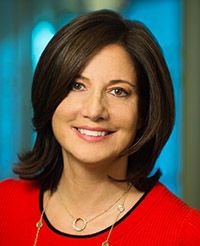
but she then chose a very specific area-a pharmaceutical specialty as a reimbursement attorney. With her JD in hand, Lewis was offered a job at a law firm because, as she says, she “knew the difference between Medicare and Medicaid.” Lewis was later recruited by another law firm, where she became a partner in a relatively unheard specialty field, representing pharma companies and tackling their compliance issues.
In 2002, Lewis joined Millennium Pharmaceuticals to create a legal structure to support the company’s transition into the commercial arena. Millennium was acquired by Takeda Pharmaceuticals in 2008, and was left largely independent to operate as its own integrated pharma company, with CEO Deborah Dunsire at the helm. In 2014, after integrating Millennium into the global R&D footprint, Takeda formed Takeda Oncology, it’s oncology commercial business unit. That is when Lewis’ current role was created. Since that time, she has evolved patient advocacy into a global, strategic business function that, according to the executive, includes patients in every part of the drug development process and allows them to contribute as thought leaders on areas of value and access.
Lewis is candid about the connection between the legal function and patient advocacy. At first glance, it might not seem that a lawyer’s take on patient advocacy would be a natural fit, she told Pharm Exec. “Lawyers tend to look at issues with a skeptical lens. ‘What could go wrong?’ ‘What does wrong look like?’” But Lewis elaborates that the two actually have a lot in common. “They need to have a strategic business focus,” she says. “The two functions overlap and complement each other in many ways and both serve a diverse group in the company. Having an enterprise view into both has been very progressive.”
The serendipity with Lewis’ background couldn’t have been a better stroke of cosmic genius. Her father was a medical doctor and Lewis remembers tagging along on patient rounds with him at the hospital. Her mother had a chronic eye condition, and Lewis accompanied her on doctor’s visits, communicating and advocating for her needs. They were living in Massachusetts during the development of managed care and medical access-topics that Lewis says provided a constant stream of dinner time discussions. Her choice for law was influenced by the discussions around that table, and the importance of access to medicines and medical care for patients; she was passionate about working at the intersection of patients and science.
Lewis says her journey has been an incredible evolution from when she started to where she is today. Along the way, she has had mentors who were able to help her make better decisions and navigate the terrain. At her second law firm, another female partner helped Lewis as she developed the pharmaceutical practice group. When Lewis had her first child, her mentor provided invaluable guidance on how to balance a demanding career while maintaining a fulfilling personal life. “I’ve had the benefit of incredible people, so I feel it is important to give back,” she says. “I mentor within and outside of Takeda, which is a lot of work, but it’s also rewarding.”
Lewis, who supports Takeda-sponsored gender diversity as well as initiatives within the life sciences, has spoken frequently about promoting female leadership; she has represented the company at events honoring female leaders, including the recent announcement of the first recipients of the Massachusetts Life Science Center’s MassNextGen initiative, for which Takeda was the anchor sponsor. Her goal is to help individuals achieve their highest potential and she is also committed to helping groom the next generation of women and men in science by promoting STEM and skills that translate into corporate careers to high school students.
“It takes a lot of resiliency and ability to change and be flexible,” says Lewis. She believes the industry has undergone huge changes on many levels. Where departments were much more siloed, now an enterprise perspective is necessary; patients that were sick and reluctant to speak out, now are making their voices heard, and are encouraged to do so by regulatory authorities; where pricing, access, and reimbursement were not part of the dialogue, they are now recurring topics in all stakeholder discussions.
But with the patient advocacy movement, Lewis says the evolution has also brought inconsistency. “Patients are asking to be more involved in drug development decisions, as well as encouraged by the FDA,” she says. But from the DOJ (Department of Justice) and OIG (Office of the Inspector General) perspective, how companies support patients from an access standpoint is a point of monitoring.” Lewis notes that every pharma company’s approach to advocacy varies, as do the approaches of the actual patient advocacy groups, and there is no one-size playbook. But she says, “At the end of the day, if you don’t develop for patients, if they can’t use your therapy, then that’s a problem. We have to preserve our ability to do that and operate at a high level with high standards.”
Access and costs vs. access and value are two different lenses, explains Lewis. “Is this too much money? What does it cost? How does it impact patients’ needs? This is a real change in the industry and we are all grappling with this right now.” But for Lewis, she says her two teams are talented and well-prepared. “I manage and push and challenge the teams to truly understand the boundaries and our business partners, because that’s what makes both departments successful.”
Lewis credits Takeda for its evolution and accelerated vision, adhering to the core values of the company, called “Takeda-ism” (integrity, fairness, honesty, and perseverance), to ensure its commitment to quality and that the company does the right thing at all times. “I am most proud of what I’ve done to change the two organizations,” she says. “For legal, to evolve the function to reflect and support global legal responsibilities, and in advocacy to rewrite the function and take it from a more relationship-based function to a strategic and substantive part of the business. To take what was status quo and working well for the company and be a change agent has been a very gratifying professional experience.”
- Lisa Henderson
Bridging Science and Solutions
Shao-Lee Lin, Executive VP, Head of R&D and Chief Scientific Officer, Horizon Pharma
Since her early teens, Dr. Shao-Lee Lin has been immersed in science and medicine, working in a lab as part of her magnet high school curriculum, learning principles and techniques that became part of the foundation of her far-reaching scientific career.
Now, as the recently appointed executive VP, head of research and development, and chief scientific officer for Horizon Pharma-she started in January-Lin is excited about her new role as she looks with gratitude on her past experiences for future guidance.
“I joined each pharmaceutical company I’ve worked during an inflection point-a time when each was
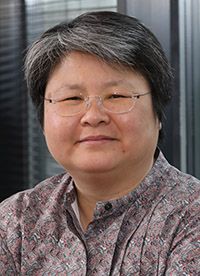
undergoing a transformation-and had the opportunity to contribute to scientific growth as well as toward building a strong, diverse team that could have a lasting impact,” Lin told Pharm Exec. “It was these experiences that drew me to the opportunity at Horizon, where I could help drive the next phase of the company’s transformation and apply the experiences I’ve had throughout my career.”
Lin was an executive medical director, global development at Amgen when the company was undergoing exponential growth. During her nearly nine years there, Amgen grew by well over 10,000 employees.
“Amgen was my transition from academia to the biotech industry,” says Lin. “I learned a lot, including how to develop medicines across a number of therapeutic areas as well as the importance of understanding medical practices around the globe to best ensure that the medicines we developed were accessible to the patients we served.”
In 2012, Lin joined Gilead at a time when it was embarking on what was considered by many a bold, if not risky, approach to chronic hepatitis C. “One of the tremendous draws for me was that Gilead was talking about cures for a chronic illness like hep C,” she says. “The company made a significant investment in the acquisition of Pharmasset, which they felt was the missing link in creating this cure, despite facing tremendous criticism from Wall Street. It was that kind of institutional courage-taking the leap to do something they believed in from a science-based perspective and push the envelope to find a cure in a chronic illness-that was incredibly attractive to me.”
Lin served as VP, immunology and respiratory development at Gilead, and by the time she left, the company had achieved its hep C success- the drug Sovaldi.
A mentor from Lin’s Amgen days recruited her to become the VP, global immunology and renal development at AbbVie in 2015. “AbbVie was in one of these amazing transformative periods,” says Lin. “The patent cliff from Humira was on the horizon. It was an immunology company, which was solidly my foundational background as a scientist and a physician, and that gave me the opportunity to contribute very rapidly.”
Lin was promoted a year later to a corporate officer level as VP, therapeutic areas, development excellence, and international development. In just under three years, she built and led a team of therapeutic area and international development heads that brought a next-generation hep C cure to market; filed for the first medicine for endometriosis since 1990; and witnessed a new approval in multiple sclerosis. Lin’s team, responsible for acquiring and advancing programs through the pipeline, also expanded the immunology area by identifying and aggressively advancing two “pipelines in a program,” each delivering in Phase III and demonstrating even further potential with Phase II results in additional indications.
As Lin reflects on her experiences at AbbVie and in other industry positions, she is grateful for how each has contributed to what she brings to her current position. She describes her days at Amgen as “building bridges” and noting, “it takes many people building bridges together to be successful.” From Gilead, she learned “how to build the plane as we flew it and to take calculated risks and apply the 80-20 rule to get stuff done.” And at AbbVie, it was all about “making possibilities real, building teams, and ensuring processes supported the programs and the people.”
Today, at Horizon Pharma, Lin brings these experiences and skills of building successful teams and effective processes to the ever-changing world of drug development.
“This is my first time working with rare diseases, and I know we have to look at development in a different way. At the current pace, with over 7,000 rare diseases, it would take thousands of years for us to find and develop medicines for each of those diseases,” she says. “At Horizon, we have a culture that strives to do things differently and build teams that can break down those traditional barriers to progress and get drugs to clinical stages faster.” In the few months Lin has been at Horizon, she has helped further the company’s strategic shift into R&D by beginning to build new processes and teams that reflects the company’s culture to take calculated risks.
Lin can clearly look back even further than the pharma industry for the insights she draws on today. “I started out in the lab and in academic medicine and thought that I would stay there,” she reflects.
Lin was born in Taiwan. She grew up in an immigrant household in some tough neighborhoods in the US. Lin reflects back on her early public school days with respect for the dedicated teachers who captured her interest and imagination with science. Her undergraduate degree is in chemical engineering and biochemistry from Rice University and her MD/PhD is from The Johns Hopkins University School of Medicine and was funded as part of the NIH sponsored medical scientist training program. Lin was a clinical scholar and scientist at The Rockefeller University. Along the way, she says she met “amazing mentors” who made unique contributions to medicines that touched patients. But she said she grew more interested in seeing how discovery made it all the way through to help patients.
“The part where you actually make the scientific discovery into a drug was a big black box to me,” says Lin, and thus she took the leap into industry. “Joining pharma was really eye-opening. As a physician in academic medicine, I thought I really understood what teams were. In academia, you are brought up as part of teams in lab settings or in a hospital setting where, as the physician, you have a defined stylized role. You write orders and they get carried out,” she laughs.
Lin says in industry, it’s a different dynamic and context. “It distills into this one concept, and my personal mantra, that all of us are better than any one of us. There is so much at stake-potentially a decade of work to develop a molecular candidate to become a therapeutic medicine, and many hundreds of patients who volunteer their time and accept risks while participating in the clinical studies, or the billions of dollars that are spent to bring a drug to market,” she says. “The stakes are high and the results are so important to patients. It’s critical to have continuous, deep input to make sure that you are bringing your team and stakeholders along with you, so you can get the end result right and bring meaningful new medicines to improve patients’ lives.”
Lin says she loves what she does, both personally and professionally. She keeps in touch with her academic roots and has consistently served as an adjunct professor at teaching hospitals localized to each of her positions. Her physician practice keeps Lin grounded, and she always puts patients first in what she strives to do in R&D.
Her advice to those entering the industry: “It’s not about plugging in your individual expertise into a framework; that’s just the first piece. I would encourage people to network as early and as often as possible to meet people from all different areas that you can draw on when you are trying to solve problems. The more ideas you have access to, the more opportunities you have to bring solutions.”
- Lisa Henderson
The Path of Curiosity
Bernat Olle, CEO, Vedanta Biosciences
Dr. Bernat Olle knew from the day he started his PhD-in Chemical Engineering Practice at MIT-that he would enter the industry after his studies. It wasn’t any great plan, he says, “it was just an intention, just about following my curiosity.”
After completing his thesis research in bacterial fermentation, Olle duly made the move to the entrepreneurial realm at Boston-based PureTech Health, a biopharma group that translates academic science into new medicine through both new ventures and an internal pipeline. Making that shift from bench to new
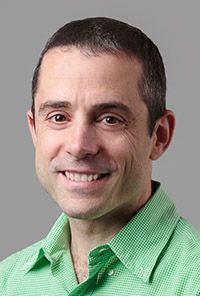
venture creation was “neither particularly difficult nor particularly easy,” Olle says, but he was fortunate to have in his colleagues, PureTech founder and CEO Daphne Zohar and co-founder David Steinberg, two teachers of “Entrepreneurship 101.”
With them, Olle would serve a nine-year apprenticeship in starting new biotechs, learning, among other things, how to evaluate technologies, assemble teams of scientific cofounders together around an idea, how to write and pursue intellectual property, how to negotiate contracts and licenses, and how to finance a company from private investors or pharmaceutical partnerships.
During his time at PureTech, Olle became very interested in understanding how emerging research on the human microbiome field could be used in developing new medicines in a range of applications. After examining more than 120 technologies in the microbiome field and assembling a team of academic pioneers, in 2011 Olle co-founded Vedanta Biosciences (with Dr. Kenya Honda of the Keio University School of Medicine) to focus on using rationally defined consortia of gut bacteria as a therapeutic modality. It was, he says, “a return to my research roots.”
Back then, the idea of using consortia of live bacteria as drugs had no precedent. Olle and Honda proceeded to demonstrate that the idea was biologically sound, that the approach was patentable, and that manufacturing processes could be conceived and scaled to produce GMP-grade drugs based on bacterial consortia. In the process, they established a blueprint for how to develop this modality of drugs, positioning Vedanta as the leader in the microbiome field. In 2015, Johnson & Johnson licensed the company’s VE202 program in inflammatory bowel disease for up to $339 million in potential milestones. In December last year, Vedanta initiated a Phase Ia/Ib, first-in-human clinical trial of VE303, its lead candidate for the treatment of recurrent C. difficile infections. In the meantime, Olle was awarded as one of 2013’s Innovators of the Year by MIT Technology Review Spain.
While the responsibilities of entrepreneurship have pulled him in new directions, Olle still feels “very connected” with the science. “Obviously, I’m not doing experiments myself, but I still spend a significant amount of time around the R&D team,” he says. “And I like to read a few scientific papers every week to keep up with what’s going on in the field.” But Olle finds the business of leading a company-fundraising, recruiting, setting the vision, and preserving the culture-as rewarding as the science. “I never resent spending time on these activities,” he says. “Take recruiting. I love it when you see your hunches in interviews being proved right later on. It’s great when someone you thought could grow into a really good manager actually goes on to become one. Or when you see that smart recruit who was very shy finally finding his or her voice, speaking up and challenging ideas and becoming a bigger part of the team. I really enjoy that part of my role.”
For Olle, what’s important as a leader isn’t a particular style of leadership. As he notes of his PhD mentors at MIT, one was charismatic and diplomatic, the other quite blunt and direct, and both equally effective.
“What matters is having people’s best interests in mind, period. This is really the root of everything,” says Olle. “If that holds, the style that you choose for managing becomes less important. If your team knows you fully support them, they will stop worrying about where they stand and spend their mental energy figuring out how to solve problems and doing a great job.”
Olle is proud of his team’s efforts in bringing a completely new drug modality to the clinic for the first time. “Now we’re starting to get data from humans and we’re working to show that this modality can be truly efficacious and safe, but just getting to this point is a big achievement.” Going forward, he still has the same drive and curiosity that was awakened in him as a schoolboy in Catalonia by a dynamic chemistry teacher.
“I’ve been given a once-in-a-lifetime opportunity to work on a really big idea that could have an impact in medicine-namely, creating a new type of medicines from our microbiome,” Olle says. “I don’t take the opportunity for granted.”
- Julian Upton
Multi-Growth Strategist
Nadeem Rehmat, Chief Operating Officer & Head of Business Development, PharmEvo Pvt. Ltd
Across the many and varied functions that Nadeem Rehmat has performed during his 23-year pharma career, a constant theme has been business development (BD) and partnering strategies. He honed his BD skills at Pakistan’s CCL Pharma during the late 1990s and early 2000s (back when BD was not recognized as a specialty function in the country), and since 2003 has been applying them with great success at PharmEvo, a Karachi-headquartered company developing, producing, and marketing therapies in areas such as cardiovascular, gastroenterology, respiratory, and oncology.
Rehmat began his career as a medical rep with G.D. Searle in the mid-’90s, after completing a degree in
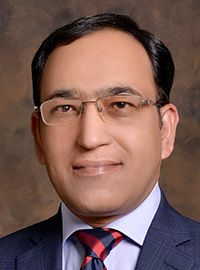
pharmaceutical sciences followed by an MBA. Combining sales rep work with his education in pharmaceuticals and business was the “best way to enter the industry,” he says. “It gave me a clear advantage and supported me in understanding the needs of healthcare professionals and patients.” But he credits his early move into BD with giving him a “360-degree understanding of pharmaceutical operations.”
Rehmat has gone on to exercise a multi-disciplinary approach by supplementing his BD activities in a range of roles at PharmEvo, including positions in international marketing, regulatory affairs, market access, licensing, pipeline portfolio management and, most recently, as chief operating officer. He has also handled various projects in medical devices, biosimilars, nutraceuticals, and phytoceuticals.
On the global scale, the pharma market in Pakistan is still small at just over $3.7 billion, but with a population set to rise to 250 million by 2030, the recent introduction of a government health insurance system, and more disposable income for healthcare products, there are reasons to be optimistic about its future, says Rehmat. Although there are signs it is slowing down, the Pakistan market achieved a compound annual growth rate of 12% between 2012 and 2017.
PharmEvo’s own growth has significantly outpaced this. Since joining in 2003, Rehmat has helped the firm transform from a small company with a turnover of less than $1 million to an international, $80-million healthcare organization with offices in 12 countries across Asia, Africa, and Central America. In the last five years, it has achieved a CAGR of almost 23%. The company’s sights are now set on moving into Europe. PharmEvo, says Rehmat, “has a good set of values, encourages performance, and has given me the liberty, the training, and the resources to perform at my best.” He adds: “There are not many companies in our region that are aiming for EMA approval or WHO pre-qualification. What is unique about PharmEvo is that it continues to push ahead of its competitors.”
Rehmat is looking forward to seeing how pharma will be shaped by technological developments in the next five to 10 years. “An increasing demand for medicines; more informed patients; the potential of big data on R&D and pharma’s ability to understand big data; robotics and artificial intelligence-all these factors will transform the industry.” However, he says, “The industry must learn to blend these new technologies into its business model. It is still working in a very conventional way.”
Rehmat remains humble about his own achievements. “My true moment of pride is yet to happen-it’s an ongoing process. No success has been big enough to claim it so far,” he says. Rehmat acknowledges the mentorship of Dr. Haroon Qassim, PharmEvo managing director, who has been “a coach professionally and a friend personally, guiding and supporting me to experiment with ideas.”
And he has been long inspired by two leaders from his home city of Karachi, former Schering-Plough CEO Fred Hassan and biosimilars pioneer Safaraz K. Niazi. Following in their footsteps means no less than making a sizeable impact on the global industry. In the meantime, there are still things Rehmat wants to learn; he would like, for example, to go back and study at “a world-class business school.”
His humility is engaging, but Rehmat’s success speaks for itself. He is recognized as one of Pakistan’s leading lights in BD. Colleagues place him among the top people in his field; they say there are few who understand BD in Pakistan as well as he does. Moreover, he is admired for his diversified, end-to-end industry expertise and his “passion, courage, and tenacity.” There is little doubt that these qualities will remain in evidence as he helps to steer PharmEvo toward newer horizons in Europe and beyond.
- Julian Upton
Mindful of the Many
Raymond Sanchez, SVP, Global Clinical Development, Otsuka Pharmaceutical Development & Commercialization
When Raymond Sanchez left his clinical and academic position at Yale University to pursue a career on the commercial side of the business, he faced a lot of doubt from his then-colleagues. But the decision was fueled by an internal passion he knew he couldn’t ignore-the desire to help more patients on a larger scale.
Many years later, Sanchez’s decision was validated.
“I was at a CVS pharmacy, and they alphabetize medicines so they can access them quickly, and I’m standing there and all of a sudden I see the Abilify bottle on the shelf,” he recalls, referring to the drug that treats the
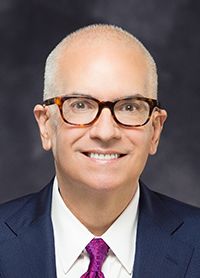
symptoms of psychiatric conditions such as schizophrenia and bipolar 1 disorder. “That was such a sobering moment, because I said to myself, ‘My goodness. I played a role in bringing that medication to patients who desperately need it.’”
Throughout his career, that’s all the now-senior VP of global clinical development at Otsuka Pharmaceutical Development & Commercialization wanted-to help patients suffering from psychiatric disease.
Even at a young age, Sanchez says he remembers always having an interest in human behavior and the brain. In fact, while still in high school, he was conducting research at the University of Miami on the affect noise had on the behavior of monkeys, and often participated in science fairs. “The brain was always something fascinating to me,” says the Northwestern University graduate, who spent time at Harvard before enrolling at Northwestern’s Feinberg School of Medicine.
When it came to medical school, Sanchez had to make a choice: neurology or psychiatry. He picked the latter, because as he explains it, he really wanted to treat the whole person and neurology was more tactical.
“If you asked me in medical school [if I was going to work for a pharma company], I would have said, ‘no way,’” Sanchez says with a laugh. “I’d say, ‘I just want to treat sick patients.’”
But after spending about six years in the Yale School of Medicine’s Department of Psychiatry, as an intern, resident, chief resident, fellow, and then instructor, Sanchez knew he wanted to do more, and that his first-hand experience and knowledge could help patients on a larger scale and not just those he was seeing at the university.
“People spend billions on assets and drug development, but don’t always look close enough at the teams or other aspects of a trial,” says Sanchez. “One of the issues in trial design or studies is that it may look good on paper-you have the right patient profile, you develop a strong protocol that is actually patient-centric.” But, as Sanchez notes, it may not actually be practical, a realization you can’t find in a textbook or academic paper.
“Part of the success in developing a drug is understanding this, and having had that practical opportunity to treat patients, you know what worked and what didn’t work, and you can relate and relay this information,” he says. “You can look at a proposal [for a clinical trial] and see the danger points and wire trips. Not having that clinical background experience can really minimize the effectiveness of the development.”
Given Sanchez’s fascination with the brain and his commitment to treat the whole person, it’s no surprise he takes the same approach when it comes to leading and managing his team. In fact, he uses mindfulness and dedicates time and money toward developing the people in his groups. For example, Sanchez brings in an outside personal and professional development coach to work with them.
“I’ve had amazing mentors in my history,” he says, adding that he wants to create that same opportunity for others. “I want to nurture enthusiasm and develop an energizing environment that is productive and exciting. We have created that environment and it’s something that attracts people to the company.”
Part of that nurturing, Sanchez says, is identifying an individual’s talents and developing them for other opportunities, as not only their career and interests grow, but also as Otsuka expands and needs additional leaders and skill sets. In fact, the day Pharm Exec spoke with Sanchez for this article he was preparing for a reception honoring someone he helped groom and was now about to take on a new leadership role at the company.
“You have to keep an open mind and open heart to be successful and happy,” says Sanchez. “You have got to listen to that inner voice and follow your passion.”
- Michelle Maskaly
Transformative Leadership
Harout Semerjian, Executive VP, Chief Commercial Officer, Ipsen
After graduating in biology from the Lebanese American University in 1993, Harout Semerjian couldn’t wait to “get out into the world and make an impact, fast.” He started his career carrying the bag as a rep for Solvay Pharmaceuticals in Beirut, Lebanon, before moving to Canada and joining Novartis in Toronto for a field role in 2001. Soon after, Semerjian took his first head office job in market research at Novartis in Montreal. After working in sales and sales management, the head office role was a revelation. “I sat in a room with the big players and was now asked to listen instead of talk,” says Semerjian. “I did that for two years and loved it as I had access to what I didn’t know.”
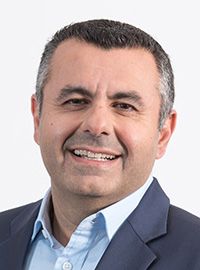
He thought Canada would be his final stop, having arrived with a one-way ticket. But he remained restless for advancement and in 2004 enrolled in the Cornell–Queen’s Executive MBA program. The next couple of years, he says, were “probably the most testing time in my life.” Semerjian and his wife had just had their first child; their second was born before he completed the program and he got a new role. The experience “created a whole new meaning of focus and prioritization,” he says. Achieving that “Holy Trinity”-pursuing a career, going back to university, and establishing a family-is something he remains proud of today.
Semerjian went on to enjoy a steady rise through the Novartis ranks. He joined the global Gleevec team in the US in 2007, then moved to Denmark in 2009 as head of the company’s oncology business unit, before serving three years as general manager of its Nordic-Baltic Oncology Cluster. He was VP and region head of oncology for Novartis’s Middle East Cluster from April 2013 to December 2014, before moving back to New Jersey as VP and franchise head of its hematology business.
After 16 years at Novartis, Semerjian joined Ipsen in February 2017, moving with his family to London. His contribution was quickly felt. In the last 20 months-first as EVP and president of specialty care international region and now as EVP and chief commercial officer-he has overseen a period of unprecedented growth across Ipsen specialty care’s three franchises: oncology, neuroscience, and rare diseases.
He has helped to steer an impressive list of products to market or to regulatory approval, including the carcinoid syndrome diarrhea treatment, Xermelo (EC approval), and Dysport, for the treatment of lower limb spasticity in adults (FDA approval). He drove the launch program for Cabometyx for the first- and second-line treatment of adults with advanced renal cell carcinoma; the drug is now reimbursed in >20 markets outside the US. Established products such as Somatuline and Decapeptyl continue to grow in a rapid manner, helping more oncology patients and gaining share in their respective markets.
Together with his executive leadership team colleagues, Semerjian is helping transform Ipsen from a small biotech to a global biopharmaceutical group. In 2017, its oncology portfolio achieved 32% growth, making it one of the fastest-growing oncology companies and breaking into the top 20 companies in terms of sales.
Semerjian believes in creating environments where it’s safe for people to make mistakes and learn. “Innovation by design means you get it wrong nine times out of 10. But that shouldn’t mean taking the safe option. You have to be prepared to take calculated risks,” he says. “The mission is still critical. There will be negative aspects, but to succeed you have to believe in the mission and lead the team forward while course correcting. The healthcare industry is still one of the best industries where you can make a positive impact on patients and on the world. It really transforms you.”
For Semerjian, good leadership is about passing on the skills and insights he has drawn from his own mentors. Early in his career, it took some time for him to realize that senior leaders “are actually very open people.” He explains: “They’re open to new starters saying, ‘I’d love to pick your brains-can I take 15 minutes of your time?’ I never had a mentor who said no. Now I try to do the same. I coach on a daily basis, and even coach people outside of my group. It’s my way of passing on those gifts.” Above all, Semerjian wants his teams to realize that “it’s possible to rise from a rep in Beirut to chief commercial officer of the third-largest French pharma company.”
A colleague notes Semerjian’s “relentless commitment to building high-performing teams, adding key external talents, and energizing them to elevate the collective ambition.” When he moves to a new role, he gets calls from colleagues wanting to join his team. “It’s not just about loyalty,” Semerjian says. “It’s about knowing they’re embarking on something that’s going to be bold and fun at the same time.”
The industry has changed dramatically during Semerjian’s career, but “it’s no better or worse, just different.” The curiosity that has driven him this far is still as strong as ever. “The innovation rate overall is still strong, a lot stronger with things like artificial intelligence and predictive learning. It’s really exciting and I want to be part of it.” He adds, “I want to be doing this for a long time to come.”
- Julian Upton
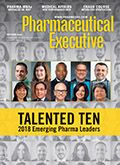
Beyond the Prescription: Pharma's Role in Digital Health Conversations
April 1st 2025Join us for an insightful conversation with Jennifer Harakal, Head of Regulatory Affairs at Canopy Life Sciences, as we unpack the evolving intersection of social media and healthcare decisions. Discover how pharmaceutical companies can navigate regulatory challenges while meaningfully engaging with consumers in digital spaces. Jennifer shares expert strategies for responsible marketing, working with influencers, and creating educational content that bridges the gap between patients and healthcare providers. A must-listen for pharma marketers looking to build trust and compliance in today's social media landscape.
Beyond the Prescription: The Role Pharma Plays in Digital Health Conversations
April 1st 2025As social media continues to influence healthcare communication, it presents both challenges and opportunities for the pharmaceutical industry. In this interview, Jennifer Harakal of Canopy Life Sciences discusses balancing compliance with effective digital engagement to build trust and facilitate meaningful healthcare conversations.